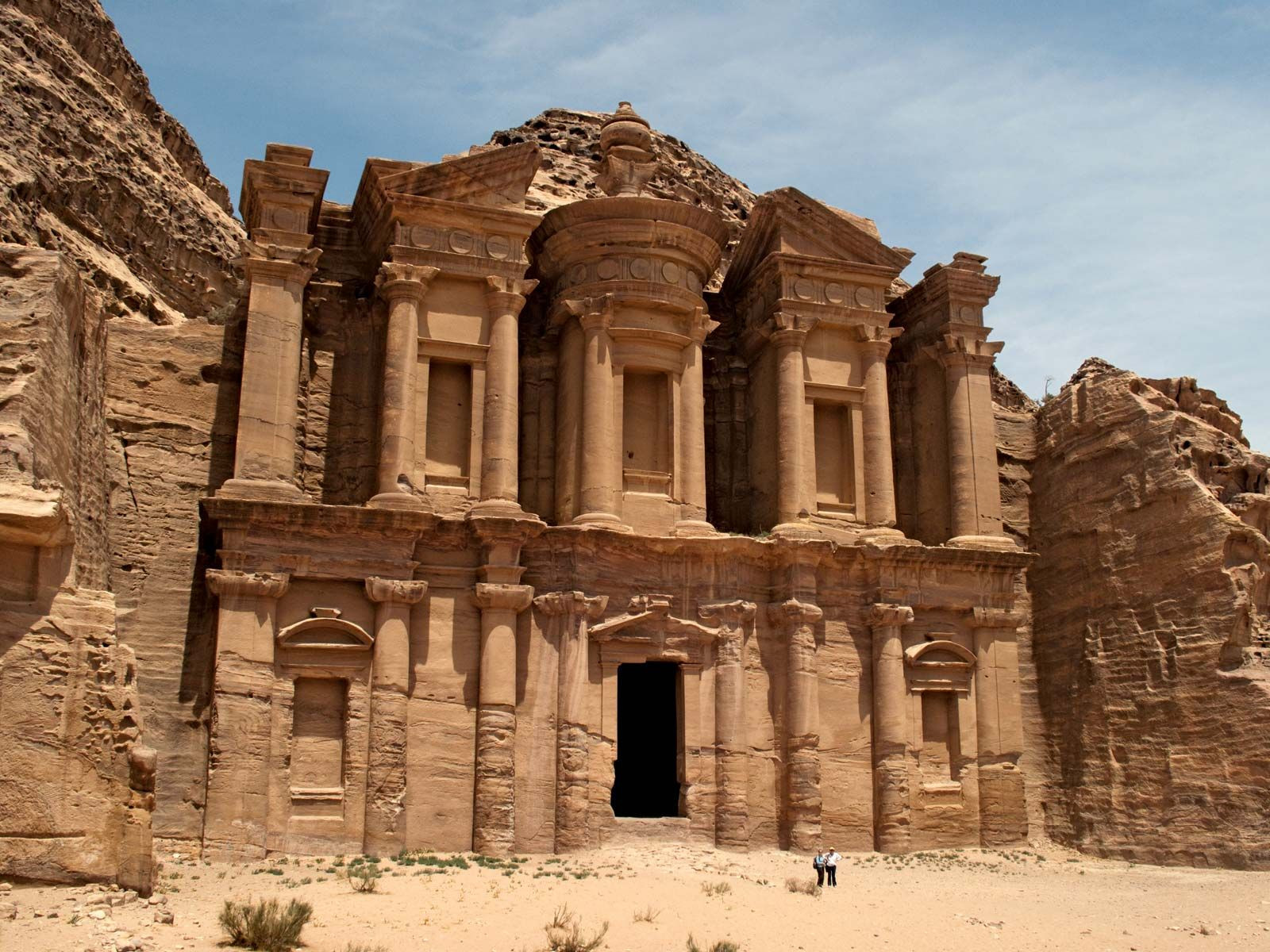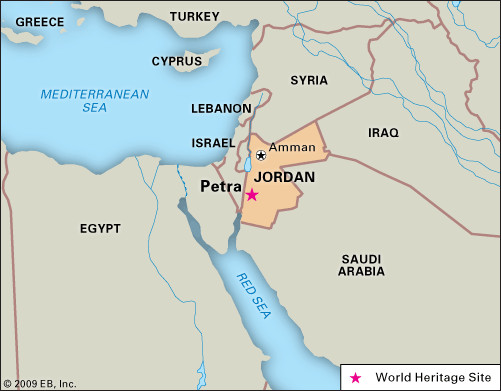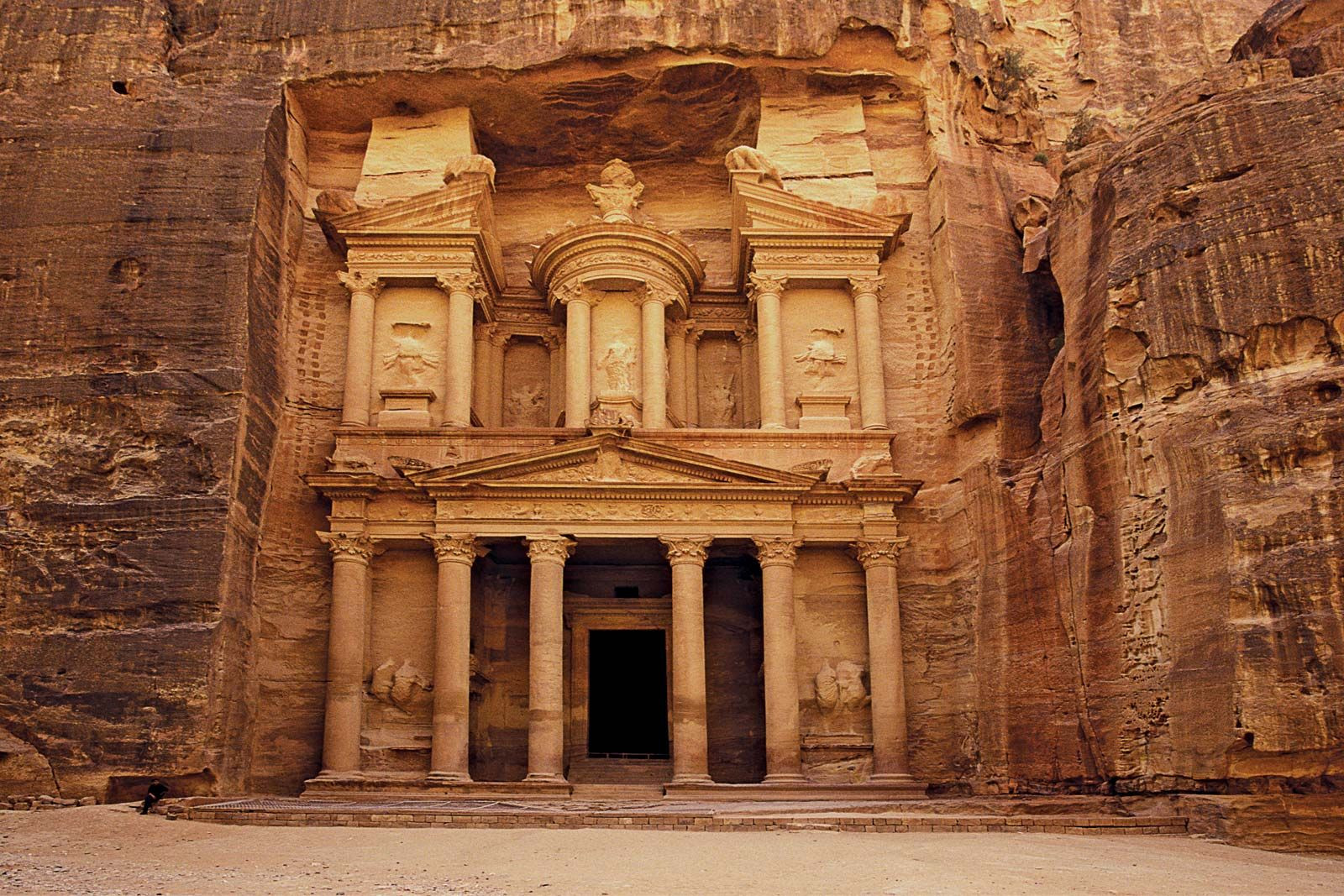Petra, a city carved into sandstone cliffs, evokes mystery and wonder. The question “Where Is Petra Located?” is often the first step for anyone captivated by images of its majestic facades and rich history. This ancient metropolis, a testament to human ingenuity and architectural prowess, is nestled in the heart of the Middle East, specifically in the southwestern region of Jordan.
Discovering Petra’s Geographical Heart
Petra’s precise location places it within the Ma’an Governorate in Jordan. To visualize it more accurately, imagine a hidden valley, pierced east to west by the Wadi Musa, also known as the “Valley of Moses.” Tradition holds this valley as one of the spots where Moses, the revered prophet, struck a rock to bring forth water for his followers. This valley, now home to Petra, is not just any valley; it’s a dramatic landscape enclosed by towering sandstone cliffs. These cliffs are Petra’s defining feature, displaying a mesmerizing palette of colors – reds, purples, and pale yellows, earning Petra its poetic nickname: the “rose-red city.”
 Panoramic view of Al-Dayr (The Monastery) in Petra, Jordan, showcasing the impressive rock-cut architecture and surrounding landscape.
Panoramic view of Al-Dayr (The Monastery) in Petra, Jordan, showcasing the impressive rock-cut architecture and surrounding landscape.
The modern town of Wadi Musa owes its existence to its proximity to this ancient wonder. Serving as the gateway to Petra, Wadi Musa caters to the continuous flow of travelers eager to explore the archaeological site. Understanding Petra’s location within Wadi Musa and southwest Jordan is crucial for planning a visit and appreciating its geographical context.
Petra’s Location: A Crossroads of History and Trade
Petra’s strategic location wasn’t just about dramatic landscapes; it was pivotal to its historical significance. Situated at the crossroads of ancient trade routes, Petra flourished as the capital of the Nabataean kingdom. This ingenious Arab tribe capitalized on Petra’s location to control and profit from the lucrative spice trade. Caravans laden with frankincense, myrrh, and spices from Arabia and India traversed through Petra, heading towards Egypt, Greece, and beyond.
 Map indicating the location of Petra in Jordan, highlighting its proximity to ancient trade routes and its geographical context within the Middle East.
Map indicating the location of Petra in Jordan, highlighting its proximity to ancient trade routes and its geographical context within the Middle East.
This trade network brought immense wealth to Petra, enabling the Nabataeans to carve out their magnificent city and develop sophisticated water management systems within the arid desert environment. Petra’s location, therefore, was not merely a point on a map, but the very foundation of its economic and political power during Hellenistic and Roman times.
Exploring Petra’s Iconic Landmarks
Within this geographically significant location, Petra houses numerous breathtaking monuments. The Siq, a narrow gorge serving as the main entrance, dramatically leads visitors into the heart of Petra, culminating in the awe-inspiring Treasury, Al-Khazna. This iconic facade, often the first image associated with Petra, is just the beginning of a vast complex.
 The Siq, the main entrance to Petra, Jordan, showcasing the towering rock walls and the path leading to the ancient city.
The Siq, the main entrance to Petra, Jordan, showcasing the towering rock walls and the path leading to the ancient city.
Further exploration reveals Al-Dayr, “The Monastery,” another monumental structure requiring a climb but rewarding visitors with panoramic views and an even grander scale than the Treasury. Royal Tombs, elaborate facades carved into the cliff faces, and the High Place of Sacrifice, an ancient cultic altar, are among the many other significant sites scattered throughout Petra.
 The Treasury (Al-Khazna) in Petra, Jordan, bathed in sunlight, showcasing its intricate facade and the surrounding sandstone cliffs.
The Treasury (Al-Khazna) in Petra, Jordan, bathed in sunlight, showcasing its intricate facade and the surrounding sandstone cliffs.
These landmarks, carved directly into the Jordanian sandstone, are not just isolated structures; they are integral parts of the landscape, deeply connected to Petra’s unique geographical setting.
From Rediscovery to World Heritage
Despite its historical prominence, Petra faded into obscurity for the Western world after the Crusades. Its location remained known only to local Bedouin tribes until Swiss traveler Johann Ludwig Burckhardt rediscovered Petra in 1812. This rediscovery brought Petra back to the global stage, sparking archaeological interest and eventually leading to its recognition as a UNESCO World Heritage Site in 1985.
 Roman gate in Petra, Jordan, highlighting the blend of Roman architectural influences with the Nabataean rock-cut style.
Roman gate in Petra, Jordan, highlighting the blend of Roman architectural influences with the Nabataean rock-cut style.
Today, Petra’s location in Jordan makes it a major tourist destination, drawing visitors from across the globe to witness its unparalleled beauty and historical significance. Efforts are ongoing to preserve this vulnerable site from natural elements and the impact of tourism, ensuring that future generations can also marvel at this ancient wonder nestled in the Jordanian desert.
Conclusion: Petra’s Enduring Allure in Jordan
“Where is Petra located?” The answer is more than just coordinates on a map. Petra is located in southwest Jordan, within a valley carved by time and history. Its location was fundamental to its rise and continues to be essential to its captivating charm. From its hidden valley setting to its role in ancient trade networks and its breathtaking rock-cut architecture, Petra’s geographical context is interwoven with its identity. Visiting Petra is not just seeing ancient ruins; it’s experiencing a landscape that has shaped civilizations and continues to inspire awe.

